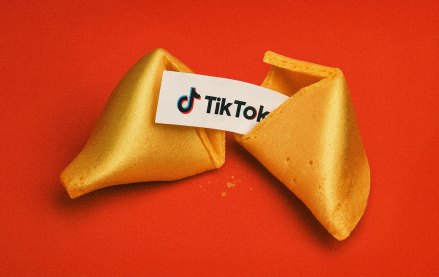Save 50% on a 3-month Digiday+ membership. Ends Dec 5.
Inside Kellogg’s social-driven strategy to launch new products
Product launches are high-risk for any CPG business, but particularly on social media where months of research and development can be wasted by the wrong promoted post. But that’s not to say it’s impossible.
Kellogg’s believes it has hit on the right formula for using customer feedback on social platforms to inform its product road map and marketing. Seven years ago, customer feedback on Twitter was used purely for word-of-mouth marketing for product launches, whereas now tweets from around the same time are being used as promoted posts.
For the launch of the white-chocolate variant of its Coco Pops brand earlier this month, the advertiser decided it didn’t need thousands of website visitors, a relationship with the editors at national newspapers or even an email list to get the product in front of its target audience. All it needed was a tweet from 2016.
To reignite interest in the tweet, which was from someone requesting a white-chocolate version of its popular cereal product, Kellogg’s put some paid social budget behind it so that it resurfaced in more Twitter feeds.
That was the first move made to tease the launch. After the first day, Kellogg’s added the more typical marketing bells and whistles it draws on for product launches: influencers, ads and eventually PR. “We wanted to have consumers talking about ‘why is Kellogg’s promoting a tweet from 2016 calling out white-chocolate Coco Pops and promoting it? Does this mean they’re going to launch it?’” said Amanjit Heer, digital moderator at Kellogg’s.
On the same day as the promoted tweet, Heer retweeted other posts on Twitter that had mentioned the idea of white-chocolate Coco Pops, some of which went as far back as 2012. Heer’s retweeting spree became so big that some people asked whether it meant the tease was real, said Heer.
The promoted tweet generated over 16,000 retweets, likes and responses on Twitter since the promoted post ran on June 14, according to Heer. A similar post was placed on Instagram, without the media support, and it was shared, liked and responded to over 2,900 times. Usually, Kellogg’s posts on Instagram get around 200 interactions. The post was also shared via direct messages 3,300 times five days after it ran, said Heer.
The hype also had an inadvertent halo effect on another Kellogg’s brand: Rice Krispies. People debated whether the white-chocolate Coco Pops would be Rice Krispies in disguise due to how similar the two cereals look. It got to a point where Rice Krispies trended on Twitter, said Heer.
Like other advertisers, Kellogg’s is reassessing the type of influencer it works with. Larger social media stars won’t always be the starting point for influencer campaigns at the brand now that reach isn’t the sole purpose of those investments. “We used a different type of influencer you could say, not your typical Instagrammer or someone with thousands of followers, to tease the launch last week,” she added.
Kellogg’s isn’t alone in turning people’s tweets into promoted posts. Carlsberg made a similar move earlier this year when it promoted posts that roasted its own beer in an attempt to subvert perceptions of the brand. The move was in part inspired by KFC’s campaign last November when it promoted tweets that dissed its own fries to promote their replacement.
“Social media intelligence is still underused when it comes to informing brands’ product development,” said Jenny Barthe, strategy director at We Are Social. “The most effective product launches get the influencer and their communities involved early on in product development.”
Launching a product on social media was an easier task six years ago. Social media is now far more cluttered, and running a predominantly organic campaign like this is almost unthinkable, which is why few CPG advertisers attempt it.
Future launches from Kellogg’s could follow a similar template on social media. Aside from being the advertiser’s biggest product launch on social media to date in the U.K. and Ireland, the campaign has also become a guide for how the brand brings its PR and social teams together, particularly when it comes to using insights from social media. Kellogg’s marketers were able to mine hundreds of tweets from people over the years in order to shape the comms plan for the launch.
Twitter and Instagram drove the bulk of the organic and promoted reach for the campaign, not Facebook. Given how hard it is for brands to get organic reach on the social network since a big change to its algorithm reduced the amount of branded content users see, it made more sense to reach a specific segment of the Coco Pops audience on Facebook with targeted ads. “We also wanted to explore promoting consumer tweets on our channel and therefore invested some paid media on Twitter, which was received pretty well considering it’s the first time we’ve done this,” said Heer.
More in Media

TikTok Shop sheds bargain-bin reputation as average prices climb across categories
An analysis by e-commerce intelligence firm Charm shows average prices climbing across more than a dozen key categories.

Ad Tech Briefing: The Programmatic Governance Council is a bid to reset power dynamics
As tensions over TID and GPID peak, Tech Lab is convening a council to hash out commercial ground rules.

Newsweek is building an AI Mode-like experience to customize homepages for readers
Newsweek is building an AI homepage modeled after Google’s AI Mode to increase engagement and offset declining search referrals.








